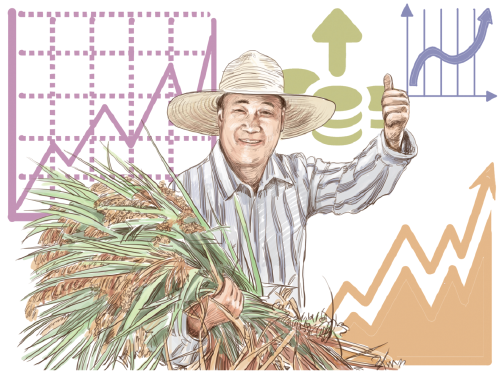Can-do approach
By LIU ZHENMIN | China Daily | Updated: 2020-10-23 07:45

China's successful poverty eradication efforts shows shared vision of zero hunger, zero poverty, equal access to social services and common prosperity is achievable
China's decades-long landmark achievements in poverty eradication and sustainable development have been recognized around the world.
Over the past seven years, between the 2012 Rio+20 Conference and 2019, the number of people living in poverty in China has fallen from approximately 100 million to about 5 million, an achievement unmatched in history. During the same period, incidences of poverty dropped from 10 percent to less than 1 percent. China is well on track to achieve the Sustainable Development Goal on ending poverty and hunger ahead of the 2030 deadline.
Indeed, China's continuing successes in poverty eradication are contributing to global progress in achieving the SDG of ending poverty and hunger as well as related goals and targets.
Moreover, it is worth noting that China's anti-poverty campaign is distinguished by its emphasis on leaving no one behind. For example, over the past seven years, the annual per capita income in poor rural counties in China increased from 6,000 yuan ($898) to close to 12,000 yuan, registering an average annual increase of 9.7 percent.
Importantly, rural households also enjoy improved access to healthcare, achieving universal healthcare coverage and universal access to modern utility services.
The maternal mortality rate has dropped from 20 per 100,000 to 18 per 100,000. And the infant mortality rate from 8 to 6, per 1,000. During the same period, more than 100,000 public schools saw continued improvements in educational facilities.
Behind these numbers lies China's vision of building a moderately prosperous society in all respects, deepening reform, advancing law-based governance, and seeking coordinated development in the economic, political, cultural, social and ecological fields.
It is a vision consistent with the global vision of the 2030 Agenda for Sustainable Development. From the perspective of public institutions, we feel that China's achievements in poverty eradication and sustainable development offer important lessons.
First, political will and leadership count. In fighting against poverty, China has witnessed consistent vertical institutional leadership, from the central government led by President Xi Jinping, to provincial and municipal governments, and to local authorities at the county, township and village levels. Its unified chain of command helps ensure that anti-poverty strategies and measures are implemented consistently and coherently.
The same institutional leadership and commitment is also seen across the ministries leading to a dynamic whole-of-government momentum for policy implementation.
Second, we see the active engagement of public institutions-including State-owned enterprises-in supporting various poverty-reduction initiatives. This engagement allows for the wealth of knowledge, expertise and resources that public institutions can bring to anti-poverty campaigns.
Third, public and private partnerships have been formed to drive the momentum for poverty eradication. Under the framework of targeted poverty alleviation initiatives, the business sector has been mobilized to provide skills training, job opportunities and resource mobilization for individual townships and villages.
Indeed, the fight against poverty has become a whole-of-society campaign.
Fourth, with support of public institutions, China has harnessed market forces, including e-commerce, to reinvigorate poverty reduction efforts. We have learned from real life cases of how vulnerable groups, such as persons with disabilities, have learned to use digital platforms to lift themselves out of poverty. This has benefited the persons with disabilities, while generating jobs and income streams for many others.
And fifth, in partnership with public institutions and local governments, China's academic and research communities and civil society organizations have played an active role. They often work with grassroots groups to identify success stories, best practices and the lessons learned in rural poverty alleviation initiatives.
China's remarkable progress in achieving poverty eradication and sustainable development demonstrates that the shared vision of zero hunger, zero poverty, equal access to social services, healthy ecosystems and common prosperity, is within our reach. Public institutions can and should play a critical role in realizing this vision, as we have witnessed in China. Our task ahead is to help disseminate the best practices, adapt and scale them up in our common endeavor to achieve the SDGs for all.
The author is UN under-secretary-general for economic and social affairs. The views don't necessarily represent those of China Daily.
























